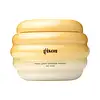What's inside
What's inside
 Key Ingredients
Key Ingredients

No key ingredients
 Benefits
Benefits

 Concerns
Concerns

 Ingredients Side-by-side
Ingredients Side-by-side

Water
Skin ConditioningHydroxypropyl Starch Phosphate
Quaternium-87
CleansingStearyl Alcohol
EmollientBehentrimonium Chloride
PreservativePropylene Glycol
HumectantIsononyl Isononanoate
EmollientCetyl Esters
EmollientCaprylyl Glycol
EmollientCapryloyl Glycine
CleansingCandelilla Cera
EmollientIsopropyl Alcohol
SolventPhenoxyethanol
PreservativeSodium Hydroxide
BufferingLinalool
PerfumingLimonene
PerfumingGeraniol
PerfumingCitronellol
PerfumingAlpha-Isomethyl Ionone
Perfuming2-Oleamido-1,3-Octadecanediol
Skin ConditioningCI 42090
Cosmetic ColorantCI 19140
Cosmetic ColorantParfum
MaskingWater, Hydroxypropyl Starch Phosphate, Quaternium-87, Stearyl Alcohol, Behentrimonium Chloride, Propylene Glycol, Isononyl Isononanoate, Cetyl Esters, Caprylyl Glycol, Capryloyl Glycine, Candelilla Cera, Isopropyl Alcohol, Phenoxyethanol, Sodium Hydroxide, Linalool, Limonene, Geraniol, Citronellol, Alpha-Isomethyl Ionone, 2-Oleamido-1,3-Octadecanediol, CI 42090, CI 19140, Parfum
Water
Skin ConditioningCetearyl Alcohol
EmollientBehenamidopropyl Dimethylamine
EmulsifyingDicocoylethyl Hydroxyethylmonium Methosulfate
Butyrospermum Parkii Butter
Skin ConditioningLactic Acid
BufferingMel
EmollientPropolis Cera
AntiseborrhoeicCeramide NP
Skin ConditioningHydrolyzed Sodium Hyaluronate
Skin ConditioningSodium Hyaluronate
HumectantHydroxypropyltrimonium Hyaluronate
Panthenol
Skin ConditioningSqualane
EmollientTocopherol
AntioxidantGlycerin
HumectantEthylhexylglycerin
Skin Conditioning1,2-Hexanediol
Skin ConditioningSunflower Seed Oil Glycerides
EmollientHydrogenated Ethylhexyl Olivate
EmollientVitis Vinifera Seed Oil
EmollientCarthamus Tinctorius Seed Oil
MaskingCalendula Officinalis Flower Extract
MaskingHydrogenated Olive Oil Unsaponifiables
EmollientOenothera Biennis Oil
EmollientRosa Canina Fruit Oil
EmollientHelianthus Annuus Seed Oil
EmollientHelianthus Annuus Sprout Extract
Skin ConditioningCitrus Aurantium Bergamia Fruit Extract
Skin ConditioningDaucus Carota Sativa Root Extract
Skin ConditioningCaesalpinia Spinosa Fruit Extract
Skin ProtectingParfum
MaskingSodium Benzoate
MaskingMaltodextrin
AbsorbentCitrus Aurantium Peel Oil
Coumarin
PerfumingHexyl Cinnamal
PerfumingLimonene
PerfumingLinalool
PerfumingLinalyl Acetate
MaskingCI 19140
Cosmetic ColorantCI 15510
Cosmetic ColorantWater, Cetearyl Alcohol, Behenamidopropyl Dimethylamine, Dicocoylethyl Hydroxyethylmonium Methosulfate, Butyrospermum Parkii Butter, Lactic Acid, Mel, Propolis Cera, Ceramide NP, Hydrolyzed Sodium Hyaluronate, Sodium Hyaluronate, Hydroxypropyltrimonium Hyaluronate, Panthenol, Squalane, Tocopherol, Glycerin, Ethylhexylglycerin, 1,2-Hexanediol, Sunflower Seed Oil Glycerides, Hydrogenated Ethylhexyl Olivate, Vitis Vinifera Seed Oil, Carthamus Tinctorius Seed Oil, Calendula Officinalis Flower Extract, Hydrogenated Olive Oil Unsaponifiables, Oenothera Biennis Oil, Rosa Canina Fruit Oil, Helianthus Annuus Seed Oil, Helianthus Annuus Sprout Extract, Citrus Aurantium Bergamia Fruit Extract, Daucus Carota Sativa Root Extract, Caesalpinia Spinosa Fruit Extract, Parfum, Sodium Benzoate, Maltodextrin, Citrus Aurantium Peel Oil, Coumarin, Hexyl Cinnamal, Limonene, Linalool, Linalyl Acetate, CI 19140, CI 15510
 Reviews
Reviews

Ingredients Explained
These ingredients are found in both products.
Ingredients higher up in an ingredient list are typically present in a larger amount.
CI 19140 is also known as Tartrazine. Tartrazine is a synthetic dye used in cosmetics, foods, and medicine to add a yellow color.
Tartrazine is created from petroleum and is water-soluble.
Some people may experience allergies from this dye, especially asthmatics and those with an aspirin intolerance.
Learn more about CI 19140Limonene is a fragrance that adds scent and taste to a formulation.
It's found in the peel oil of citrus fruits and other plants such as lavender and eucalyptus. The scent of limonene is generally described as "sweet citrus".
Limonene acts as an antioxidant, meaning it helps neutralize free radicals.
When exposed to air, oxidized limonene may sensitize the skin. Because of this, limonene is often avoided by people with sensitive skin.
The term 'fragrance' is not regulated in many countries. In many cases, it is up to the brand to define this term. For instance, many brands choose to label themselves as "fragrance-free" because they are not using synthetic fragrances. However, their products may still contain ingredients such as essential oils that are considered a fragrance.
Learn more about LimoneneLinalool is a fragrance and helps add scent to products. It's derived from common plants such as cinnamon, mint, citrus, and lavender.
Like Limonene, this ingredient oxidizes when exposed to air. Oxidized linalool can cause allergies and skin sensitivity.
This ingredient has a scent that is floral, spicy tropical, and citrus-like.
Learn more about LinaloolParfum is a catch-all term for an ingredient or more that is used to give a scent to products.
Also called "fragrance", this ingredient can be a blend of hundreds of chemicals or plant oils. This means every product with "fragrance" or "parfum" in the ingredients list is a different mixture.
For instance, Habanolide is a proprietary trade name for a specific aroma chemical. When used as a fragrance ingredient in cosmetics, most aroma chemicals fall under the broad labeling category of “FRAGRANCE” or “PARFUM” according to EU and US regulations.
The term 'parfum' or 'fragrance' is not regulated in many countries. In many cases, it is up to the brand to define this term.
For instance, many brands choose to label themselves as "fragrance-free" because they are not using synthetic fragrances. However, their products may still contain ingredients such as essential oils that are considered a fragrance by INCI standards.
One example is Calendula flower extract. Calendula is an essential oil that still imparts a scent or 'fragrance'.
Depending on the blend, the ingredients in the mixture can cause allergies and sensitivities on the skin. Some ingredients that are known EU allergens include linalool and citronellol.
Parfum can also be used to mask or cover an unpleasant scent.
The bottom line is: not all fragrances/parfum/ingredients are created equally. If you are worried about fragrances, we recommend taking a closer look at an ingredient. And of course, we always recommend speaking with a professional.
Learn more about ParfumWater. It's the most common cosmetic ingredient of all. You'll usually see it at the top of ingredient lists, meaning that it makes up the largest part of the product.
So why is it so popular? Water most often acts as a solvent - this means that it helps dissolve other ingredients into the formulation.
You'll also recognize water as that liquid we all need to stay alive. If you see this, drink a glass of water. Stay hydrated!
Learn more about Water